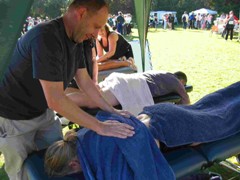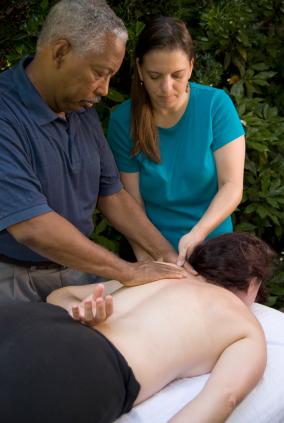
Massage Education – Why Are Most Teachers Men?
The vast majority of massage therapists are women. Yet the majority of high profile teachers of massage education are males (and being honest, most of these are white Anglo males as well). This often brings about consternation from female therapists about why they are misrepresented at the upper echelons of the massage teaching profession. Is it another example of the patriarchal society we inhabit or are there valid reasons for it?
Without getting to heavily into arguments about glass ceilings and so on, there is probably an element of the normal societal advantages that men may receive when it comes to getting ahead in the massage education industry. However, I suspect that compared with other industries, this will be significantly less. Male and female massage teachers will be more likely to be judged solely on their merits and abilities. Indeed, it may be that when presented with equivalent candidates then female massage education specialists may have priority as they may be able to connect with the gender majority in the classroom.
However there are a couple of factors that may skew the balance heavily in the favour of men when it comes to the gender of senior massage educators.
Career Longevity
If you were to plot the ratio of men to women by length of massage career then you would find that it gradually rises. The proportion of male therapists practicing 1 year after qualifying is fairly low. But if you look at the same ratio after 5, 10 and 15 years for example then you would notice a steady rise in the trend. For therapists who have passed one year as a therapist then the chance of them still being in the industry after 10 years is much higher for men.
This is not to say that there are not female therapists who have great career longevity. There are and there are many who are great when it comes to massage education.
But women are more likely to drop out of the industry because of various reasons including pregnancy, parenting, the physical challenges of massage, etc. They are more likely to be working part-time as well in order to fit massage around family, life and so on.
Male therapists, who overcome the initial challenges of being a male massage therapist in a female dominated industry, are more likely to treat massage as a full-time career. On balance, their massage careers will be longer.
If you believe that there is a correlation between how long someone has been doing massaging and the likelihood of them teaching then it is fairly easy to understand why males may be over-represented when it comes to the teaching of massage.

They are told to enter massage education.
Frequently on massage forums and facebook groups, newly qualified male therapists have a grumble about how hard it is for them to get a massage job and attract clients (or even get an interview in the first stage). The standard “helpful” advice is that they should focus on a niche that is perceived as being more accepting of male therapists such as sports massage or deep tissue massage.
Or they should become teachers.
It goes without saying that men are not inherently better teachers of massage education. In fact, given that the majority of practicing therapists are female then there is an argument that women may be better teachers with more understanding of the challenges that therapists may face in their career. And to be honest there is very little room for male teachers in modalities such as pregnancy massage.
But the reality is that for the reasons outlined above, most recognised teachers of massage are men. And as is the case in the wider business community, there is probably an argument that there are many females who would contribute greatly to massage education if given suitable opporutnity.